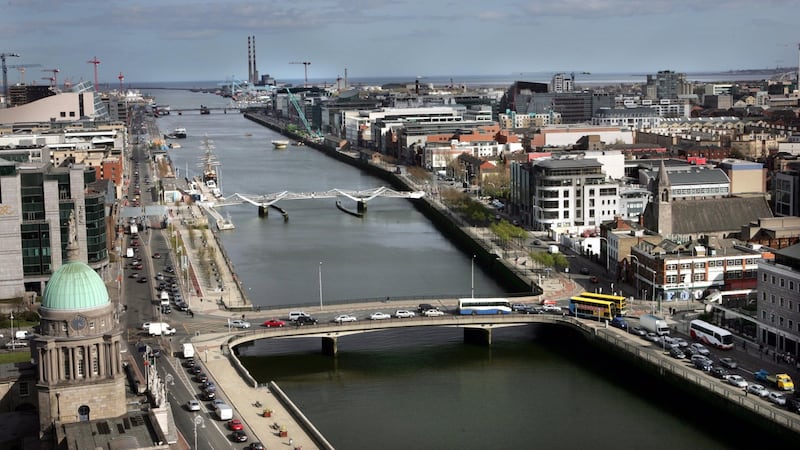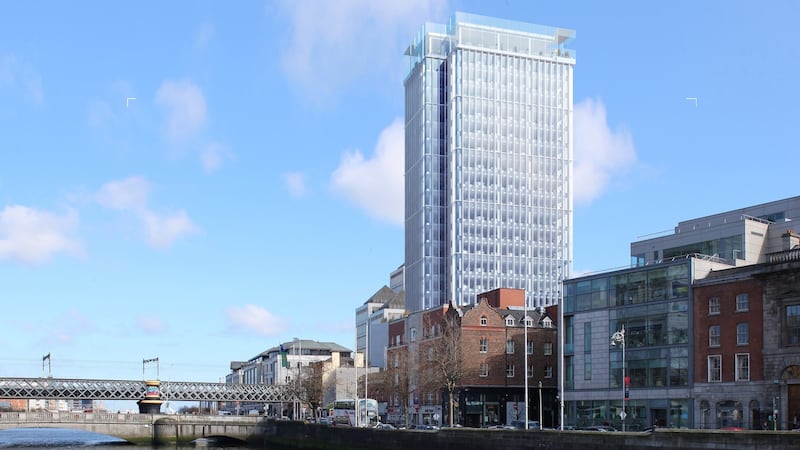Developer Johnny Ronan's plans for Dublin's tallest building, a 22-storey tower beside Tara Street station, have been rejected by Dublin City Council because of the potential detrimental effect on most of the historic core of the city.
Mr Ronan's company Tanat Ltd sought permission from the council last May for the €130 million 88m tower with offices and a 110-bedroom hotel, with a roof-top restaurant and bar, on the south side of the Liffey.
The plans were opposed by heritage groups including the Irish Georgian Society, which said the tower would have an adverse impact on the character and integrity of “architecturally sensitive” buildings and locations; and An Taisce which said the development would affect buildings as far away as Grafton Street.
However, in its reasons for refusal the council went further and said the proposal would have a “significant and detrimental visual impact” as far away as Harcourt Street to the south, Lord Edwards Street in Christchurch to the west and the Five Lamps on the North Strand.

Due to its “scale, bulk and height” the tower would “seriously detract” from the setting and character of the Custom House “one of the city’s most important architectural set pieces”. It would also have an adverse and detrimental impact on the River Liffey Conservation Area and the O’Connell Street and Environs Architectural Conservation Area, it said.
The proposed development would seriously injure the urban character and visual amenities of the historic city core
Damaged views
Important views from numerous parts of the city would be damaged if the development was allowed including those from College Green, the Trinity College campus, Lord Edward Street, the Five Lamps, Granby Row, Frederick St North, Parnell St North, Henrietta St, Kildare St and Harcourt St.

“The proposed development would therefore seriously injure the urban character and visual amenities of the historic city core and would be contrary to the proper planning and sustainable development of the area,” the council said.
Commonly with developments of this scale, where council planners are dissatisfied with elements of a proposal, the applicant is given an opportunity to amend the plans by responding to a “further information” request from the council. However in this case the council has chosen an outright refusal of Mr Ronan’s plans without seeking any amendments.
The tower would have been almost 30m taller than Liberty Hall on the opposite side of the river
Mr Ronan has four weeks to appeal the council's decision to An Bord Pleanála.

The tower would have been almost 30m taller than Liberty Hall on the opposite side of the river, and almost 10m taller than Capital Dock, currently under construction at Sir John Rogerson’s Quay, which will, when complete, be the city’s tallest building.
However the 88m height of the tower was permissible under the council’s George’s Quay Local Area Plan, approved by councillors in 2012 to govern the creation of a new “midtown” for the city south of the Liffey to Pearse Street, and from Hawkins Street to Lombard Street.
The site was also one of just four in the city earmarked for high-rise buildings, along with the docklands and Connolly and Heuston stations, under the Dublin City Development Plan approved last year.









